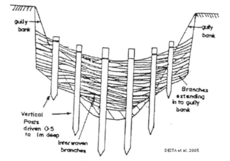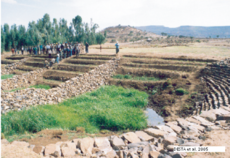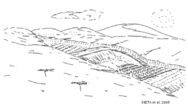Knowledge fuels change - Support energypedia!
For over 10 years, energypedia has been connecting energy experts around the world — helping them share knowledge, learn from each other, and accelerate the global energy transition.
Today, we ask for your support to keep this platform free and accessible to all.
Even a small contribution makes a big difference! If just 10–20% of our 60,000+ monthly visitors donated the equivalent of a cup of coffee — €5 — Energypedia would be fully funded for a whole year.
Is the knowledge you’ve gained through Energypedia this year worth €5 or more?
Your donation keeps the platform running, helps us create new knowledge products, and contributes directly to achieving SDG 7.
Thank you for your support, your donation, big or small, truly matters!
Micro-hydro Power (MHP) Projects - Mitigation and Intervention Techniques - Gully Control
Overview
► Back to the overview "Mitigation and Intervention Techniques Related to Micro-hydro Power (MHP) Projects"
Gully Control
Stone Checkdams
| Objectives: A stone checkdam is a structure across the bottom of a gully or a small stream, which reduces the velocity of runoff and prevents the deepening and widening of the gully. Sediments accumulated behind a checkdam could be planted with crops or trees/shrubs grass and thus provide additional income to the farmer. |
Brushwood Checkdams
| Objectives: Brushwood (BW) checkdams are vegetative measures constructed with vegetative materials, branches, poles/posts and twigs. Plant species which can easily grow vegetatively through shoot cuttings are ideal for this purpose. The objective of BWs is to retain sediments and slowdown runoff, and enhance the revegetation of gully areas. They are constructed either in single or double row. Some of the vegetation can be used for fodder. BWs are also ideal to stabilize conservation structures bunds, SS bunds, check dams, bench terraces, road sides, etc. |
Gully Reshaping, Filling and Revegetation
|
Sediment Storage (SS) and Overflow Earth Dams (SS Dams) for Productive Gully Control
|
Sediment Storage (SS) and Overflow Soil Bunds (SS Bunds)
|
Further Information
References
- DESTA, L. et al. (2005): Part 1: Community Based Participatory Watershed Development: A Guideline. Addis Ababa: Ministry of Agriculture and Rural Development.























